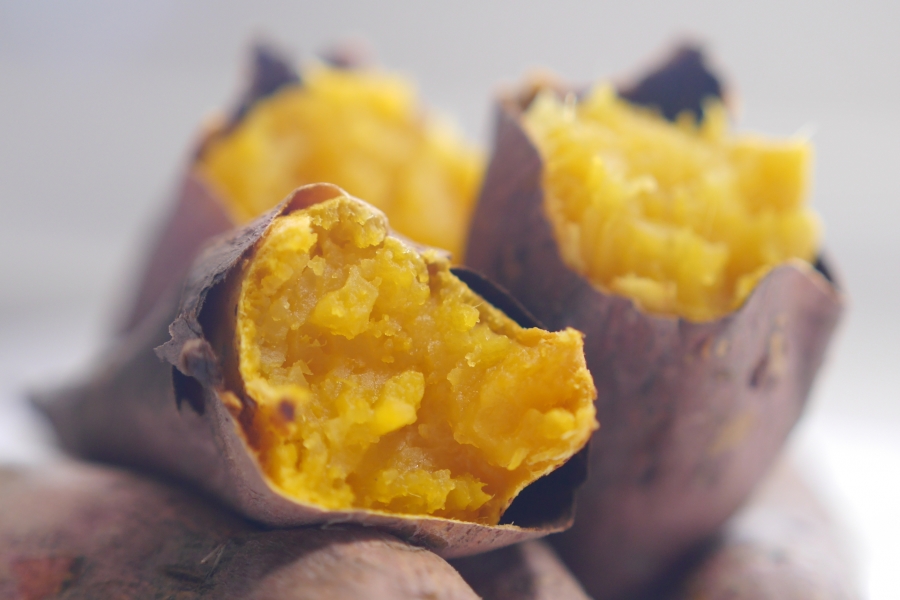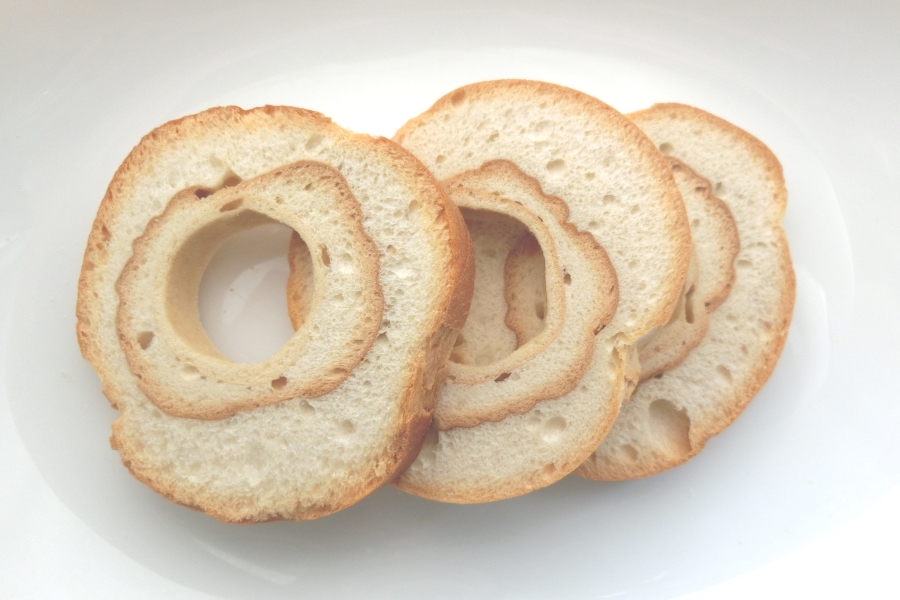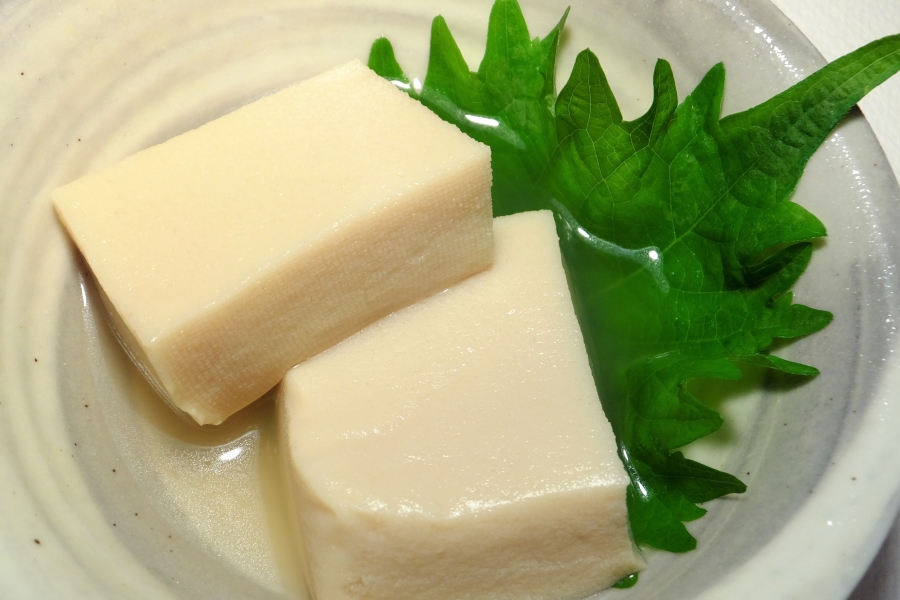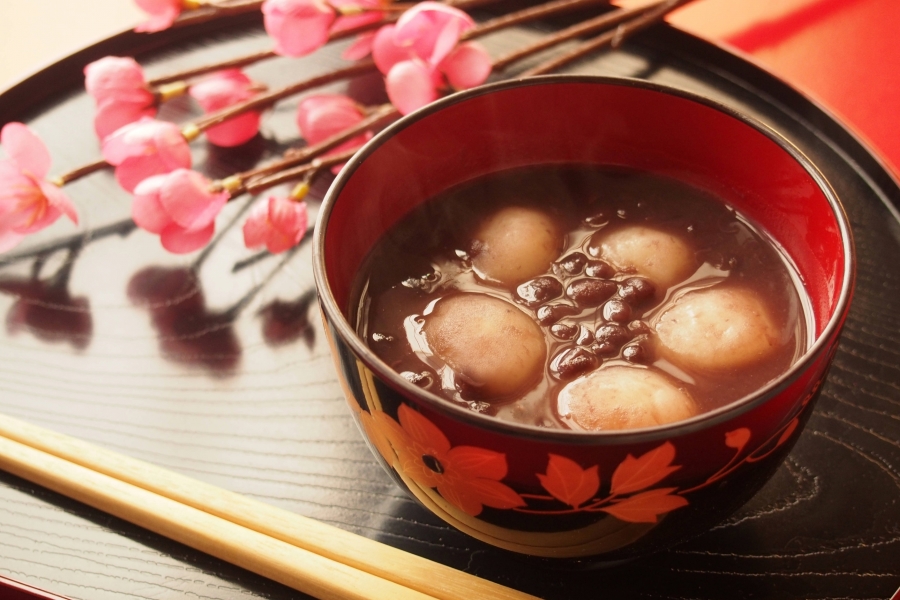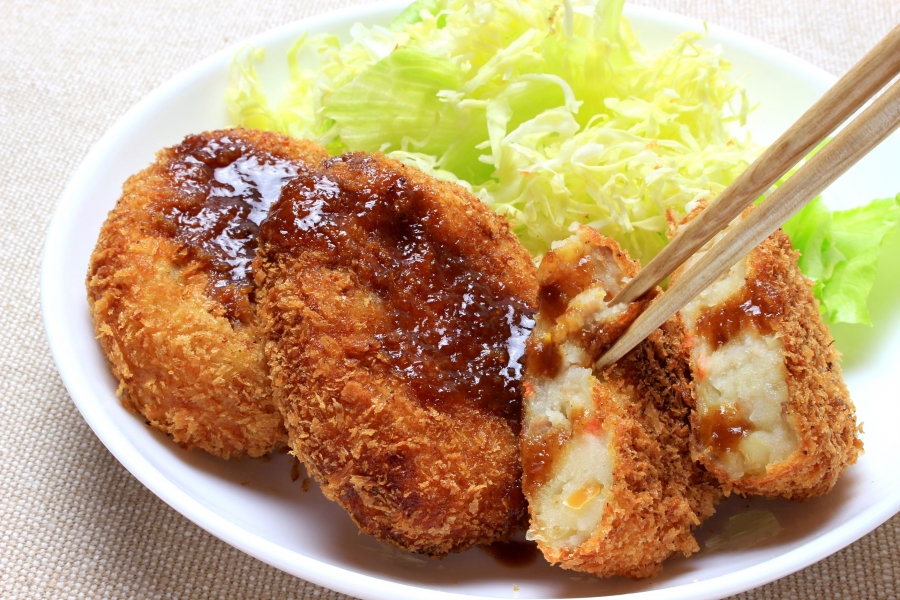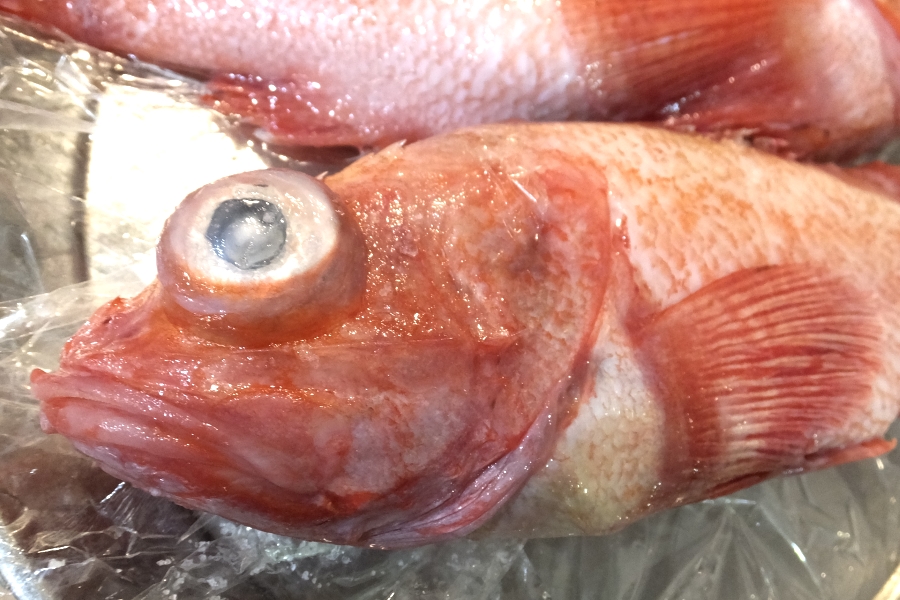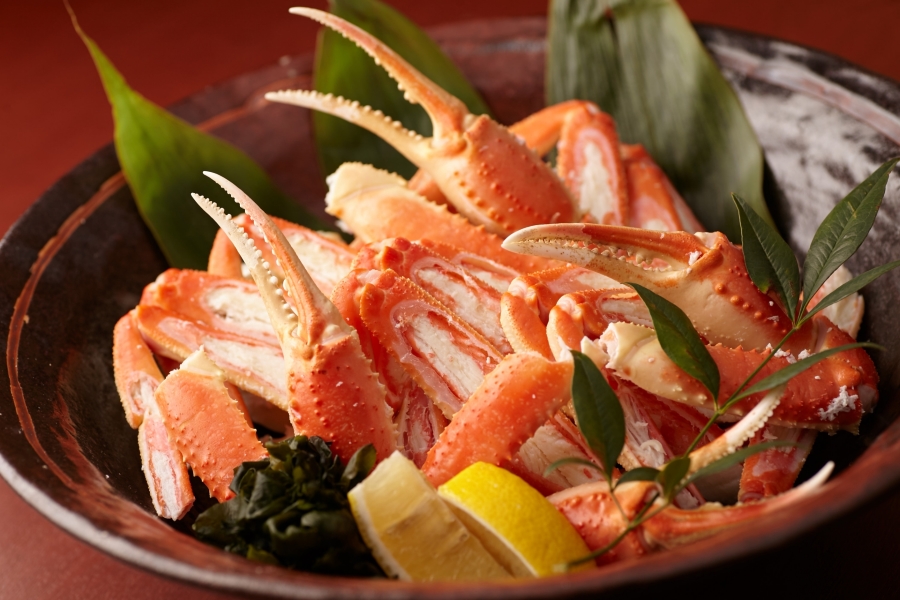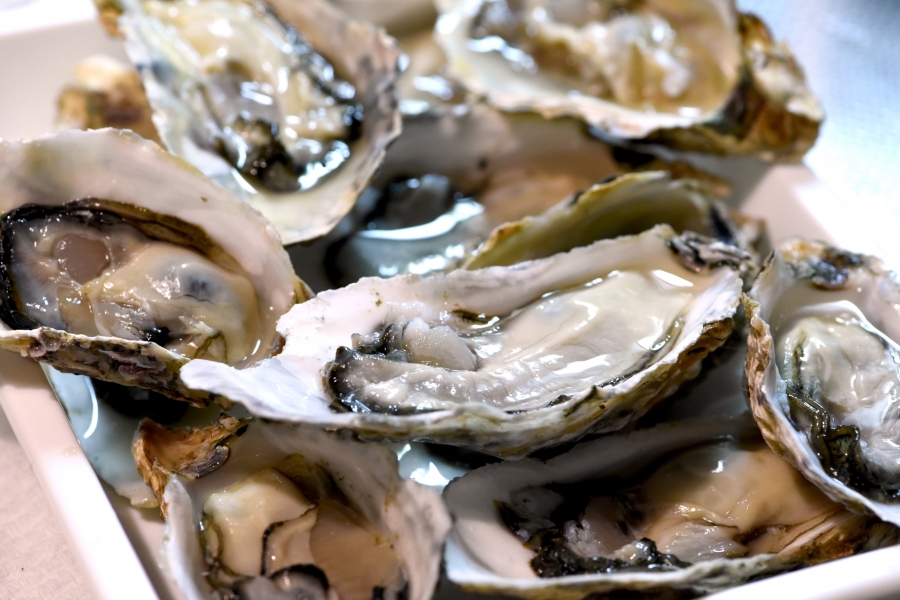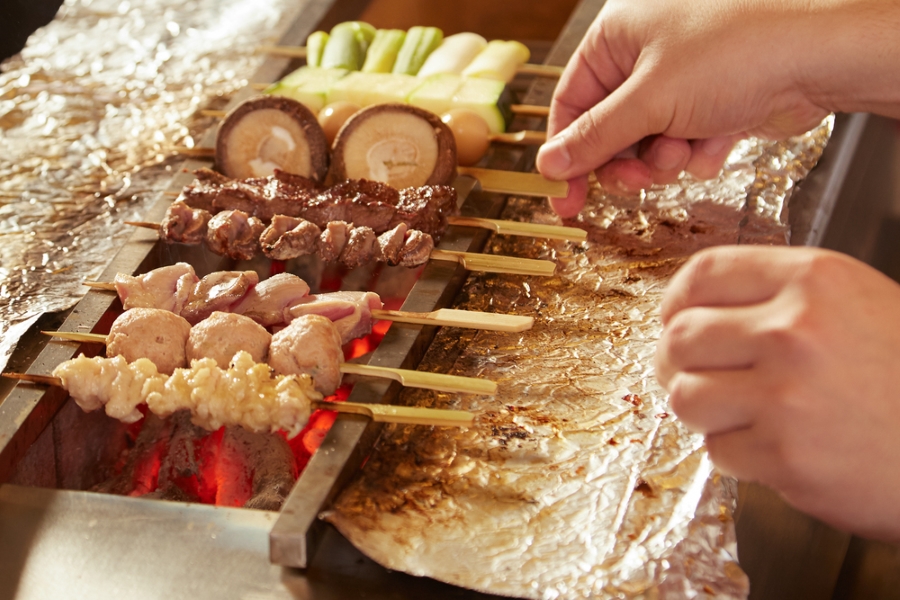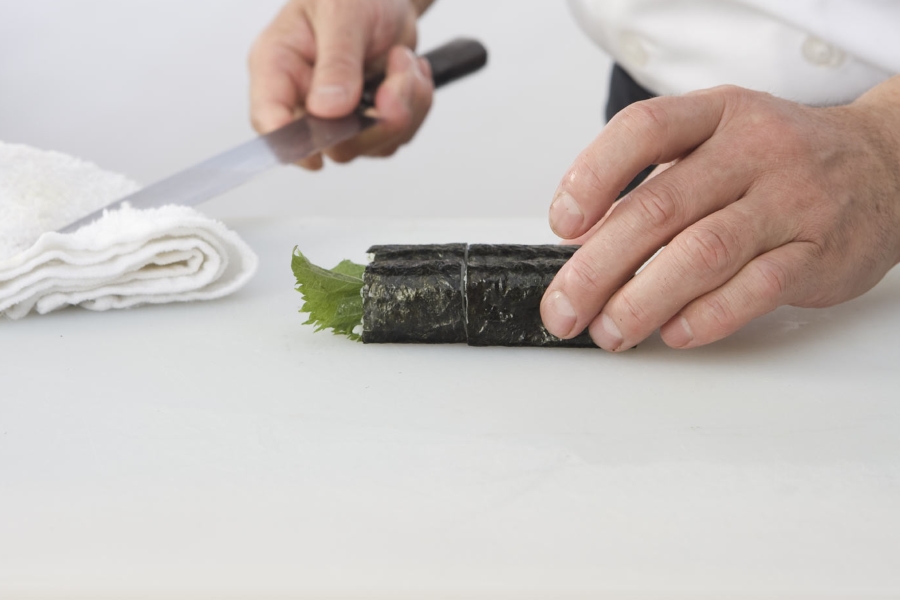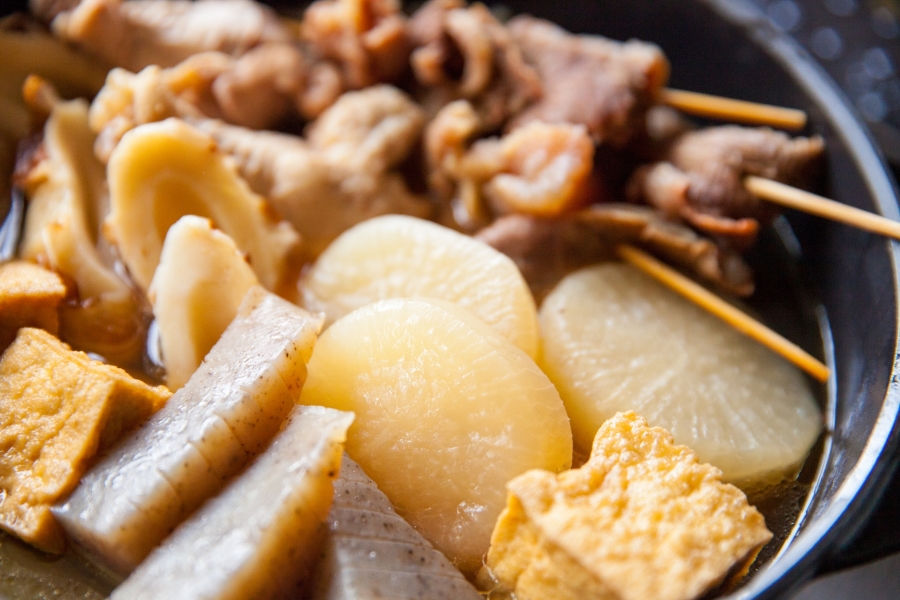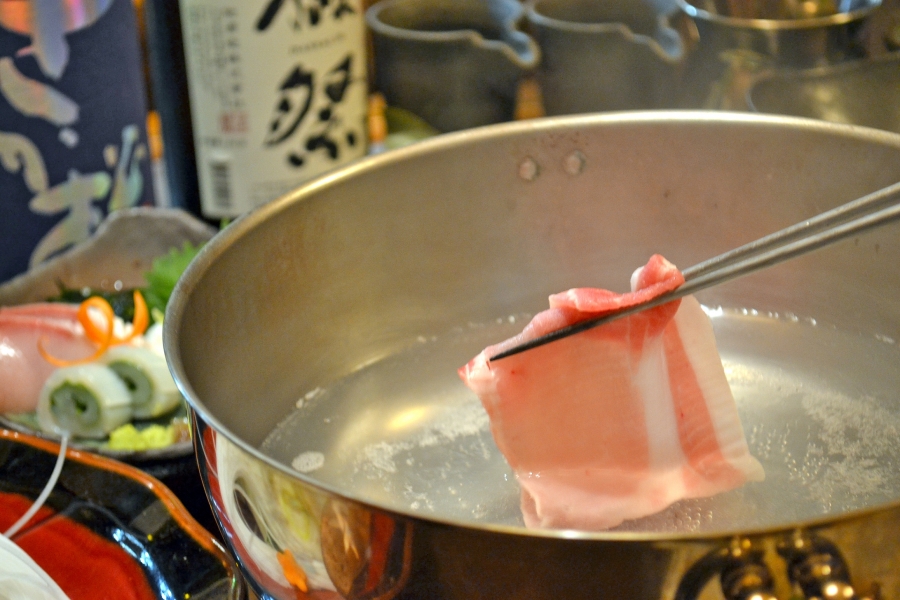Contents: The Story of Yakiimo The Birth of Yakiimo Healthy Snack How to Roast Yakiimo Health Benefit of Yakiimo Kinds of Sweet Potatoe The Story of Yakiimo We are amazed at the varieties of yakiimo that have become available in recent years, with their delightful aroma of malt sugar and as sweet and tasty as cake. Improvements in the breeding of sweet potatoes, advancements in cultivation, curing, and storage technologies, and extensive research in roasting are behind the evolutionary changes of yakiimo. The traditional types of yakiimo include potatoes roasted to the smooth, slightly dry texture favored in Kanto and those with the softer, moister texture eaten in Kansai and the south. With the availability of Naruto Kintoki, Beni Haruka, […]
Contents: What is Kasuzuke? Selecting Additive-Free, Wild-Caught Fish The Right Way to Make Delicious Kasuzuke Kasuzuke and Health Nijiya’s Seacret Kasuzuke Recipe What is Kasuzuke? The method of using such wild yeast as malted rice to treat fresh seafood may be unique to Japanese cuisine. Among all fish dishes, the exquisite kasuzuke is an indispensable dish in Japanese meals. Kasuzuke adds a distinctive flavor to fish while removing its fishy odor. The rare, sophisticated taste and excellent nutritional value of kasuzuke are now attracting food lovers throughout the world. In Japan, the harvest season for new rice crops is the time when the brewing of new sake begins. When the sake brewing is nearly complete, fresh sake kasu (sake lees) […]
Himono refers to a method of food preservation that has existed since the Jomon Period (14,000-300 BC). This method is excellent and convenient as it allows many types of fish to be preserved for consumptions all year round. Himono values the process of “drying” where the umami of the fish is extracted by exposure to the sun’s rays. Contents: The History of Himono Nutrients of Himono Himono Recipes Himono Ratatouille Recipe Himono-no-Sunomono Recipe Himono Mixed with Grated Daikon Recipe Chirashi Sushi with Himono Recipe Fried Dried Fish Recipe The History of Himono Sakana-no-himono is now widely available in the supermarket. The method of preserving fish as himono has apparently been practiced since the Jomon Period (14,000-300 BC): fossils of dried […]
The best way to start your day is to have a good breakfast. A healthy, delicious diet will help you maintain stamina and enthusiasm. Contents: Why is Breasfast Necessary? Breakfast and Dieting Let’s Eat a Healthy Breakfast Rice Recommendations Recipes of Pre-cooked Dishes for Japanese-Style Breakfast Why is Breakfast Necessary? Because adults and children are so busy in today’s world, many leave home in the morning without breakfast. However, breakfast isn’t just to satisfy hunger. It has a much more important role. A person’s temperature fluctuates throughout the day, declining after about 9 p.m. to enter a resting state for the brain and body. This means that your body temperature is at its lowest point as you wake up in […]
Contents: What is Satsuma Age? Secrets to Satsuma Age Taste Satsuma Age Recipes Satsuma Age and Shrimp Saute Recipe Satsuma Age Oden Recipe Satsuma Age and Shungiku Nibitashi Recipe What is Satsuma Age? It is said that Satsuma-Age was first made over 160 years ago in Okinawa. Fried fish was known as “Chikiagi” and spread to Kagoshima. From Kagoshima it spread all over the country and has different names in different parts of Japan. Generally, it is called “Satsuma Age” (fish cake) in Eastern Japan and is considered a form of “tempura” in Western Japan. Satsuma age has as much protein as an egg. Furthermore, its fish protein is of better quality than that of meat. It also includes plenty […]
Contents: Fascinating Facts About Fu History of Fu A Variety of Fu Enhance The Flavor of Your Everday Dishes! Eat Fu to Stay Healthy Fu Recipes Dashimaki Tamago (Japanese Rolled Omlete) Recipe Kuruma-fu no Nimono (Simmered Kuruma-fu Dish) Recipe Fu Chanple (Stir-fried fu) Recipe Fascinating Facts About Fu Fu is not bread, nor is it a cracker. It isn’t a snack food, nor is it a staple food. Although it is made from wheat flour, you don’t see fu in the flour-consuming nations of Europe or North America. Fu is a uniquely Japanese specialty. Just like koyadofu (freeze-dried tofu), miso (fermented soybean paste), katsuo-bushi (dried fish flakes), niboshi jako (dried tiny fish), sushi and soba (buckwheat noodles), there is nothing […]
Contents: What is Gindara? Gindara Recipes Gindara Kasuzuke Recipe Simmered Gindara Nitsuke Recipe Gindara Agedashi (deep-fried gindara) Recipe Yu-an Style Grilled Gindara Recipe Easy Foil-baked Gindara Recipe What is Gindara? Gindara is a relatively expensive fish in Japan. It is known for its soft-textured flesh with high fat content, and it’s an excellent fish for simmering or baking. The best ways to eat gindara are probably kasu-zuke and saikyo-zuke. Cooking gindara by these methods will remove the excess water from the fish and trap the fat content within the fish. Gindara becomes even more flavorful when cooked together with the flavors of sake lees or Saikyo miso. In Japan there are stores that specialize in kasuzuke, and each year trips […]
Zakkoku has become increasingly popular these days. Cooking regular rice with a blend of zakkoku can boost its taste and nutritional value substantially. Eating zakkoku rice can help you feel great and stay healthy every day. Just combine organic brown rice or white rice with a variety of zakkoku. Proper blending is the key to delicious zakkoku rice. Assorted zakkoku packets are also available. Contents: What Is Zakkoku? The Significance of Zakkoku Rice Kinds of Zakkoku Zakkoku Recipe What Is Zakkoku? Zakkoku is a collective term for grains of the grass family that bear small fruit seeds. There are other types of grains with similar fruit seeds that aren’t part of the grass family. These grains are called ruiji zakkoku, […]
Kiriboshi-daikon is daikon (Japanese radish) that has been thinly sliced and sun dried. Bathed in sun, the strips increase in sweetness and nutritional value. Contents: What is Kiriboshi-Daikon? Kiriboshi-Daikon Recipe Kiriboshi-Daikon & Canned Tuna Salad Recipe Light Kiriboshi-Daikon Salad Recipe What is Kiriboshi-Daikon? When compared to the same weight of raw daikon, kiriboshi-daikon contains fifteen times more calcium to strengthen bones and teeth, 32 times more iron to prevent pernicious anemia, and ten times more vitamins B1 and B2 to support metabolism. Because the volume decreases to approximately one tenth when dried, kiriboshi-daikon is a more efficient way to absorb nutrients. As a rich source of dietary fiber, it improves digestion and promotes beautiful skin. Kiriboshi-daikon is effective in weight-loss […]
Contents: Miso Comes in a Variety of Shapes and Forms Moromi-Miso Recipe Miso Comes in a Variety of Shapes and Forms Miso is normally used in soups and/or cooked dishes. However, some types of miso are used alone as a topping for plain-tasting foods, eaten as a snack with drinks, or put on steamed rice. These types of miso are referred to as “okazu miso.” Kinzanji-miso is a wellknown example of okazu miso. Moromi-miso refers to a soft, solid mass where the raw ingredients brewed to make soy-sauce or sake become fermented. Put simply, it is a stage of fermentation prior to becoming soy sauce. To make moromi-miso, the koji (malted rice) made from wheat, soybeans, rice, etc., is fermented […]
Nobody knows who came up with koyadofu first, though it’s certainly a traditional Japanese flavor that dates back to ancient times. Koyadofu is made simply from soybeans, and has long been enjoyed throughout Japan under the names “Shimi-dofu” or “Koyasan-dofu.” It looks just like a hard sponge, and it doesn’t even appear to be edible or fresh. Koyadofu could have been destined to simply die out, but now it is appreciated for its distinctively high nutritional value. Koyadofu is an excellent, storable healthy food that Japan can boast to the world. Its nostalgic taste is now becoming increasingly popular and is soon to emerge as a dynamic influence on modern cooking. Contents: What is Koyadofu? The Nutritional Value of Koyadofu […]
Oshiruko, or zenzai, is one of the desserts we crave during a cold winter. By the way, do you know what the difference is between oshiruko and zenzai? Actually, they both vary depending on the region and can be defined in many different ways. Therefore, when people who are reading this article hear about oshiruko or zenzai as mentioned here, what they’ll picture in their minds may differ according to the part of Japan they call home. Contents: Oshiruko is Excellent Dessert Oshiruko’s Supporting Cast Oshiruko Recipe Fun Recipe of Oshiruko Oshiruko is Excellent Dessert Generally, in the Kanto region a soup dish contammg “bean paste” made of red beans is referred to as shiruko, whereas in the Kansai region […]
Contents: How Do You Want to Make It Today? Potato Croquettes Recipe How Do You Want to Make It Today? You can cook croquettes in various ways, depending on your goal: “time saving,” “best to eat as soon as cooked,”” delicious even when cold,” and “non-fried.” Here are some cooking tips: Choosing the Ingredients Potatoes: Russets or a similar variety, which become fluffy when cooked, work well for croquettes. Generally speaking, waxy potatoes such as Yukon Gold and red potatoes become gluey when cooked, so they’re more suitable for a sinm1ered dish than for croquettes. Onion: The yellow onion is the best cooking onion. Ground meat: Use beef, pork, or a mixture of the two, depending on your preference. Oil […]
Contents: Nijiya’s Nori Tsukudani Nori Tsukudani Recipe Nijiya’s Nori Tsukudani New items added to our popular “Nijiya Small Bottle” series are Nori Tsukudani and Nori Tsukudani with Shiitake. Nori tsukudani is made with simple ingredients-nori seaweed and seasonings; Nori Tsukudani with Shiitake has added shiitake mushrooms. Nori seaweed is rich in protein, vitamins, and minerals. We make it without MSG and thickener so you can feel its natural, smooth texture. Enjoy Nijiya homemade Nori Tsukudani on steamed rice and of course with onigiri (rice balls)! How to Cook Nori Tsukudani (Nori Tsukudani Recipe) Nori Tsukudani Rolled Egg Good for bento menu! Ingredients (Serves 2) 3 eggs 1 Tbsp. Nori Tsukudani Salt and pepper (to taste) Oil (as needed) Cooking Directions […]
Contents: What is Sakura Denbu? How to Cook Sakura Denbu What is Sakura Denbu? Sakura denbu refers to mashed, seasoned fish that is colored light pink with red food coloring. The pink color evokes the blossoms of Japanese cherry trees, called “sakura,” in Japanese. Sakura denbu is mainly used to add color to rice and sushi dishes. It gives off an airy mouth-feel with a lightly sweetened and gentle flavor. Denbu is often mistaken for “oboro,” but oboro uses shrimp and/or salmon. Denbu is soft and fluffy while oboro is crumbly. Either can be used to add color or as a topping for sushi, etc. Though “denbu” is rarely eaten in large quantity, it is indispensable for its role in […]
Contents: Tororo Kombu is one of many processed kombu product Tororo Kombu Recipe Tororo Kombu is one of many processed kombu product There are many types of kombu (=kelp). Despite the fact that kombu is known to be rich in nutrients, many of us use it only for stock because we do not know exactly how else to use it in cooking. Tororo-kombu, also known as shredded kombu, is one of many processed kombu products. It is made from giant kelp and/or Larninaria ochotensis known as “Rishiri-kombu.” Thinly sliced pieces of the kombu are pressed by laminating and cut against the grain into thin strips. In the Hokuriku region, in particular, many varieties of tororo-kombu are available with different ingredients […]
Contents: American Kinki Kinki Recipe American Kinki The kinki (channel rockfish) is in the Scorpaenidae family. The formal Japanese term for it is kichiji, but it appears on the market in Japan under a more popular name: kinki. The fish has become a luxury, as the amount that can be caught in Japan has been reduced in recent years. The delicious kinki however, can also be caught here in America. They make their habitat as far north as Alaska, as well as on the West and East coasts of the continent, and many are exported to Japan. Fatty, frozen kinki from Alaska, as well as those fresh-caught locally, arrive at Nijiya stores. The kinki, among white fish is exceptionally fatty […]
Crab is essential for winter seafood recipes. Everyone agrees that crab is the king of winter flavors. Aren’t you filled with anticipation when you think of hot pot or kani suki (crab hot pot) on a cold winter’s day? Contents: Nijiya Sticks to Raw Crab! Jumbo Snow Crab Red King Crab How to Choose Good Crab Nutrition Value Kani (Crab) Recipes Snow Crab Cream Tomato Pasta Recipe Kani Nabe (Crab Hot Pot) Recipe Crab Rice Recipe Kani Tama Recipe Nijiya Sticks to Raw Crab! Crab in American stores is usually cooked or boiled, but Nijiya purchases raw crab not only to keep the original flavor but also to give our customers greater freedom of preparation. Crab is a seasonal food […]
Contents: What is Kaki (Oysters)? Degree of Freshness is Different with Nijiya’s Oysters Oyster’s Nutritional Value Oyster Recipes As the weather turns cold, hot-pot dishes appear frequently on the dinner table. Family and friends enjoy gathering around a delicious hot-pot dish. There are many kinds of hot-pot dishes: sukiyaki, shabu-shabu, chanko-nabe, motsu-nabe, etc. The most popular versions of these are seafood hot-pot dishes such as crab-nabe. When salmon, codfish, monkfish, etc. are put in the pot with a variety of vegetables, the umami of the ingredients is definitely enhanced. We recommend putting oysters in seafood hot-pot dishes. A melting, soft and syrupy umami from the oysters fills the mouth. Here, we are going to talk about oysters, which are also […]
Contents: What is Izakaya Style? 10 Best Izakaya Style Restaurants in the U.S. 10 Most Popular Izakaya Dishes What is Izakaya Style? Remember those travel food shows where the host visits a tiny alley somewhere in Tokyo, and sits next to a middle aged Japanese salary-man who definitely has had more than a couple of drinks who then proceeds to happily recommend menu items in broken English to the host? Of course, the host feels obliged and orders, only to result in both having a great time bonding over sake and yakitori. The show usually ends with a pithy comment from the host along the lines of, “Drinking: the international language!” That is an Izakaya. So what is an Izakaya […]
Contents: What is Yakitori? 10 Best Yakitori Restaurant in the U.S. What’s on the menu? (10 Most Popular Yakitori Menus) What is Yakitori? With the popularity of Izakaya and Robata restaurants both in and outside of Japan, yakitori has become one of the most popular Japanese dishes behind sushi and ramen. What’s not to love? It’s sort of like ‘mini chicken teriyaki’ that you can eat endlessly. A seemingly easy dish to make, yakitori makes a great appetizer at an izakaya, but it is actually a highly specialized cuisine and there are many restaurants that specialize in only yakitori. For those of you, who are not familiar with yakitori, imagine a Japanese shish kabob. A few bite size pieces of […]
Contents: Best Yakiniku Restaurant, “Gyu-Kaku” Gyu-Kaku Menu Where is Gyu-Kaku? What is Yakiniku anyway? Best Yakiniku Restaurant, “Gyu-Kaku” Fact: Yakiniku smells insanely good. When you pass by any Gyu-Kaku restaurant in the world, the smell of grilled meat allures you. Even if you are going to a meeting and don’t have time to stop for a yakiniku lunch, you’ll be thinking about it all throughout the meeting, at night, until you have yakiniku in your stomach. Lucky for you, Gyu-Kaku restaurant is expanding and there’ll be one near you soon. What is Gyu-Kaku, you ask? If you ever had Japanese style BBQ, where you grill your own meat, chances are, you have been to Gyu-Kaku. Gyu-Kaku Japanese BBQ restaurants have […]
ROKI Le Izakaya – New Japanese Restaurant in Flatiron offers ramen and sushi It seems like there are new Izakayas popping up every week in New York City these days. Which one is worthy of your precious time? What to order? How is the Izakaya experience different from that at my favorite sushi bar? All great questions. Let’s find out! The newest addition to Manhattan’s Izakaya scene is ROKI, high-end Japanese brasserie (ie Izakaya) that serves everything from veal liver sashimi to organic vegetable ramen. Yes, the menu is vast, as a good Izakaya typically serves a large diverse menu. ROKI has a few signature menu items that are really special. Their Japanese canapé is definitely one of them and […]
Top 5 Reasons to Attend Sushi Chef Institute Students can acquire necessary sushi skills in ONLY 2 MONTHS with our unique curriculums Licensed institute by US Federal government & the State of California Issue I-20 to apply for M-1 student visa Learn traditional to contemporary styles of popular sushi & rolls Job placement support by our Sushi Chef Agent service About Sushi Chef Institute Are you looking for a good Sushi School? Would you like to receive the highest quality of sushi making education? Would you like to be a master in Japanese cooking? We are sure to meet your expectations. Sushi Chef Institute is a Sushi School for anyone who wants to learn Sushi making and traditional Japanese cooking. […]
Contents: What is Sukiyaki? Major Two Sauce Styles – About “Warishita” Popular Sukiyaki Sauce Brands How to cook Sukiyaki? (Beef Sukiyaki Recipe) Sukiyaki Reinvented Recipe What is “Sukiyaki” Song? What is “Sukiyaki” Western Django? What is Sukiyaki? What is the first thing that comes to mind when you hear sukiyaki, perhaps the famous love song Sukiyaki? What about the Japanese hot pot dish sukiyaki? For most Japanese, we immediately crave hot pot dishes, especially sukiyaki, on a cold winter day. Do you know the difference between sukiaki and shabu shabu? Both are hot pot dishes but very different, one is more of a sizzling pot and the other is a simmering soup. Sukiyaki is the first one and involves sautéing […]
Basically, Oden is a Japanese soup made by filling a simmering pot with a dashi soup stock and various ingredients such as daikon (Japanese radish), boiled egg, multiple types of fish cakes, and konnyaku (yam cake). The oden ingredients are simmered in the pot for hours, or even days, and when you bite into the ingredients your mouth will be filled with the juicy flavorful soup. Yum! Also, once you have enjoyed your soup you can then add rice or noodles at the end for another delicious meal. Contents: What is Oden? Oden by Regions of Japan 15 Most Popular Oden Ingredients Assorted Fish Cake Sets and Oden Soups How to cook Oden? What is Oden? If you heard of […]
Contents: What is Shabu Shabu? How to cook Shabu Shabu Shabu Shabu Reinvented Recipe Shabu Shabu Dipping Sauces What is Shabu Shabu? Hot pot dishes are a staple food in Japan during the cold winter months, and shabu shabu is the one of the most popular ones eaten at both home and at restaurants. The difference between shabu shabu and other hot pot dishes, such as oden or sukiyaki, is that oden broth is seasoned with soy sauce, kombu kelp, and mirin (sweet cooking sake) and sukiyaki broth is much sweeter and seasoned with soy sauce and sugar. How to eat Shabu Shabu Shabu shabu has a clear broth, seasoned only with kombu kelp, so it has very little flavor. […]
Japanese-People Approved Best Japanese Restaurants in Las Vegas Sin City received its nickname from the many human vices that the city has to offer. Gluttony is one of the newer sins that Las Vegas has become known for. There are an increasing number of Japanese restaurants on and off the Strip. Here are our 10 picks that can satisfy both Japanese ‘salarymen’ and visitors from all over the world seeking the best Japanese food! Kabuto (Sushi) Yui Edomae Sushi (Sushi) Sekushi Japanese Restaurant (Sushi) Mizumi (Teppanyaki) Marugame Monzo LV (Udon Noodles) Hachi (Izakaya) Raku (Izakaya) Yu-Yu (Izakaya) Nobu (Japanese Fusion) Japanese Curry Zen (Curry) 1. Kabuto Sushi You wonder how can we eat fresh sushi in the middle of the […]
Japanese-People Approved Best Japanese Restaurants in Chicago Not being close to the ocean or to Japan for that matter didn’t stop Chicago from hosting an increasing number of Japanese restaurants. Whether you crave fresh raw fish, authentic made from scratch ramen, or small izakaya dishes, you are in luck. There is quite a variety of great Japanese restaurants in Chi-Town. 1. Kai Zan (Sushi) 2. Juno (Sushi) 3. Naoki (Sushi) 4. Sushi Dokku (Sushi) 5. Sumi Robata Bar (Hibachi) 6. Wasabi (Izakaya / Ramen) 7. Momotaro (Izakaya) 8. Umai (Izakaya) 9. Arami (Izakaya) 10. Yusho (Izakaya) 1. Kai Zan Sushi When Melvin & Carlo Vizconde were working at various sushi restaurants in the Chicago area, they both had regulars often […]
Matsutake is a wild seasonal mushroom having an intense aroma, distinctive texture and natural flavor. Matsutake, grows in relatively dry soil containing few nutrients. It is found in the autumn in single-tree forests of Japanese red pine, Yezo spruce (Picea jezoensis), etc., or in mixed forests of primarily needle-leaved trees. Contents: What are Matsutake Mushrooms? How to prepare Matsutake Musrooms? Let’s taste Matsutake Mushroom simply and originally! How to cook Matsutake Mushrooms? What are Matsutake Mushrooms? The relationship between the Japanese people and mushrooms has a long history. Many pieces of mushroom-shaped earthenware have been found in ruins of the Middle Jomon Period (3500-1500 B.C.E.). The Japanese classic Manyoshu poetry anthology contains tanka (thirty-one syllable poems) featuring the matsutake mushrooms […]
